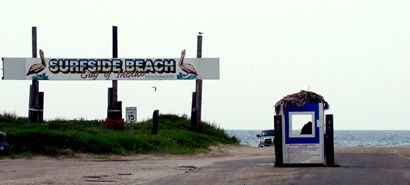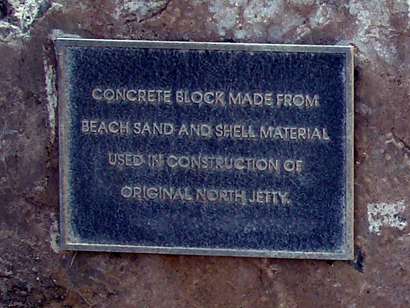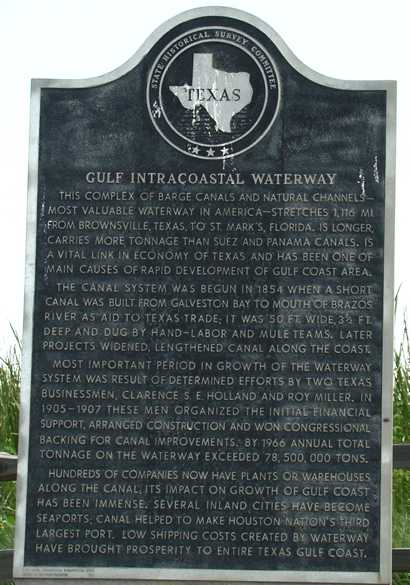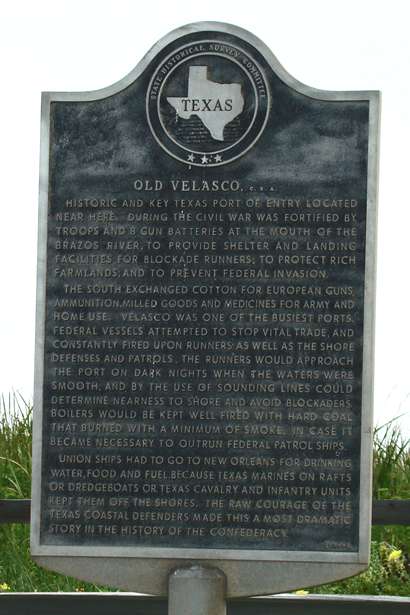Surfside Beach, aka Surfside, Texas, Brazoria County. (original) (raw)
Brazoria County, Texas Gulf Coast
28� 57' 7.69" N, 95� 17' 3.89" W (28.952136, -95.284415)
On the Gulf of Mexico at the end of Highway 332
7 Miles E of Freeport
19 Miles SE of Angleton the county seat
ZIP code 77541
Area code 979
Population: 579 Est. (2019)
482 (2010) 763 (2000) 611 (1990)
Book Hotel Here › Freeport Hotels

Welcome to Surfside Beach
Photo courtesy Ken Rudine, July 2007
History in a Seashell
Besides being the mouth of the lengthy Brazos River, Surfside also surrounds the former limits of what was Velasco. Prior to the Great Storm of 1900, Surfside was a very popular resort of inland Texans who needed to cool off during the summer months. The Surfside Hotel - one of the largest and grandest of the resort hotels survided the hurricanes but eventually burned to the ground. Surfside remained mostly a beach until WWII when it was included in the newly designated "Brazosport Industrial Complex."
From a 1950s population of 1,208, it reached its high-water mark in the 1970s with a population of 2,300. The town incorporated under the name Surfside in 1975 but was renamed Surfside Beach in the late 1980s. By the late 80s the population had shrunk to a mere 604. It rose to 763 in 2000, but declined again to 482 in 2010.

Surfside Beach
Photo courtesy Ken Rudine, July 2007

"Concrete block made from beach sand and shell material used in construction of original north jetty."
Photo courtesy Ken Rudine, July 2007

Gulf Intracoastal Waterway historical marker
Photo courtesy Ken Rudine, July 2007
Historical Marker: SH 332, 1 block south of Intracoastal Waterway
Gulf Intracoastal Waterway
This complex of barge canals and natural channels — most valuable waterway in America — stretches 1,116 mi. from Brownsville, Texas, to St. Mark's, Florida. Is longer, carries more tonnage than Suez and Panama canals. Is a vital link in economy of Texas and has been one of main causes of rapid development of Gulf Coast area.
The canal system was begun in 1854 when a short canal was built from Galveston Bay to mouth of Brazos River as aid to Texas trade; it was 50 ft. wide, 3.5 ft. deep and dug by hand-labor and mule teams. Later projects widened, lengthened canal along the coast.
Most important period in growth of the waterway system was result of determined efforts by two Texas businessmen, Clarence S. E. Holland and Roy Miller. In 1905-07 these men organized the initial financial support, arranged construction and won congressional backing for canal improvements. By 1966 annual total tonnage of the waterway exceeded 78,500,000 tons.
Hundreds of companies now have plants or warehouses along the canal. It's impact on growth of gulf coast has been immense. Several inland cities have become seaports. Canal helped to make Houston nation's third largest port. Low shipping costs created by waterway have brought prosperity to entire Texas gulf coast.
(1967)

Old Velasco, C. S. A. historical marker
Photo courtesy Ken Rudine, July 2007
Historical Marker: SH 332, 1 block south of Intracoastal Waterway
Old Velasco, C. S. A.
Historic and key Texas port of entry located near here. During the Civil War was fortified by troops and 8 gun batteries at the mouth of the Brazos River, to provide shelter and landing facilities for blockade runners; to protect rich farmlands; and to prevent Federal invasion.
The South exchanged cotton for European guns, ammunition, milled goods and medicines for army and home use. Velasco was one of the busiest ports. Federal vessels attempted to stop vital trade, and constantly fired upon runners as well as the shore defenses and patrols. The runners would approach the port on dark nights when the waters were smooth, and by the use of sounding lines could determine nearness to shore and avoid blockaders. Boilers would be kept well fired with hard coal that burned with a minimum of smoke, in case it became necessary to outrun Federal patrol ships.
Union ships had to go to New Orleans for drinking water, food and fuel, because Texas marines on rafts or dredgeboats or Texas cavalry and infantry units kept them off the shores. The raw courage of the Texas coastal defenders made this a most dramatic story in the history of the Confederacy.
(1964)
Brazoria County 1907 postal map showing Velasco
From Texas state map #2090
Courtesy Texas General Land Office
Texas Escapes, in its purpose to preserve historic, endangered and vanishing Texas, asks that anyone wishing to share their local history, stories, landmarks and recent or vintage photos, please contact us.
